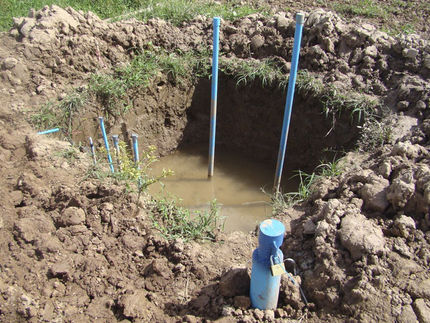Deadly effect of arsenic in drinking water measured in massive study
10-year project finds arsenic linked to more than one-fifth of deaths in parts of Bangladesh
More than 20 percent of deaths in a study of 12,000 Bangladeshis were attributable to arsenic exposure from contaminated drinking water, new research reports. The large 10-year study is the first to prospectively measure the relationship between individual exposure to arsenic and its associated mortality risk, the authors said. The data, collected by an international team from Chicago, New York, and Bangladesh, will be published early online Saturday in The Lancet .
Since the widespread installation of hand-pumped wells to tap groundwater sources in the 1970's, as many as 77 million people - about half the population of Bangladesh - have been accidentally exposed to dangerous levels of arsenic. The World Health Organization calls the exposure "the largest mass poisoning of a population in history."
The Health Effects of Arsenic Longitudinal Study (HEALS) was led by Habibul Ahsan, MD, MMedSc, Director of the Center for Cancer Epidemiology and Prevention at the University of Chicago Medical Center. Arsenic levels from well drinking-water and repeated biennial urine samples of 12,000 subjects were associated with deaths in that population over the last decade.
For the 25 percent of people exposed to the highest levels of arsenic, mortality risk increased by nearly 70 percent, the study determined. People exposed to moderate levels of the poisonous chemical also exhibited increased deaths from chronic disease, relative to those whose exposure was within WHO recommendations of 10 parts per million.
"The results of this study have important public health implications for arsenic in drinking water," the authors write. The exposure levels studied are "similar to other populations that have low-level arsenic exposure."
Arsenic is known to be a potent carcinogen and toxic to organs such as the liver, skin, kidney and the cardiovascular system. But previous studies assessing the effects of long-term drinking-water exposure to arsenic have lacked resolution, relying upon retrospective analysis and estimations of exposure on a group, rather than individual, level.
The HEALS project sought to improve upon this body of research with a prospective study, actively monitoring exposure levels in a large set of individual Bangladeshis. Nearly 12,000 subjects were recruited and tested for baseline arsenic levels in drinking water and urine between 2000 and 2002, then underwent follow-up tests approximately every 2 years thereafter.
While a quarter of the study's population was within the WHO-determined safe range of 10 µg/L, the upper quartile was exposed to 27 times that amount on average. Those individuals were found to be 68 percent more likely to die from a chronic disease over the time period studied, compared to individuals with exposure less than 10 µg/L, after controlling for other factors such as sex, age, body mass, blood pressure and smoking.
Subjects with moderate arsenic exposure were at a smaller yet still elevated risk of mortality. When the entire population exposed to arsenic levels above the WHO guideline was combined, 21.4 percent of all deaths and 23.5 percent of deaths from chronic disease could be attributed to arsenic exposure, the authors wrote.
Original publication: Maria Argos, Tara Kalra, Paul J. Rathouz, Brandon Pierce, Faruque Parvez, Vesna Slavkovich, Alexander van Geen, Joseph Graziano, Yu Chen, Tariqul Islam, Alauddin Ahmed, Muhammad Rakibuz-Zaman, Rabiul Hasan, Golam Sarwar; Arsenic exposure from drinking water, and all-cause and chronic-disease mortalities in Bangladesh (HEALS): a prospective cohort study."; The Lance 2010.
Most read news
Other news from the department science

Get the life science industry in your inbox
By submitting this form you agree that LUMITOS AG will send you the newsletter(s) selected above by email. Your data will not be passed on to third parties. Your data will be stored and processed in accordance with our data protection regulations. LUMITOS may contact you by email for the purpose of advertising or market and opinion surveys. You can revoke your consent at any time without giving reasons to LUMITOS AG, Ernst-Augustin-Str. 2, 12489 Berlin, Germany or by e-mail at revoke@lumitos.com with effect for the future. In addition, each email contains a link to unsubscribe from the corresponding newsletter.
Most read news
More news from our other portals
Last viewed contents
List_of_homologues_of_the_human_reproductive_system
Squamous_cell_carcinoma
Mitral_stenosis
Disease_theory_of_alcoholism
Multiple_endocrine_neoplasia
Cardiac_amyloidosis























































